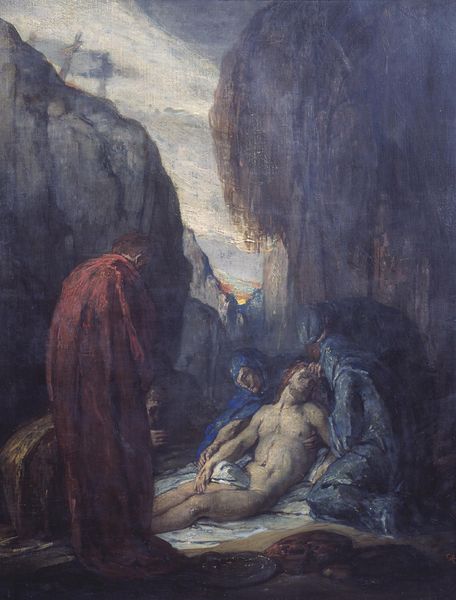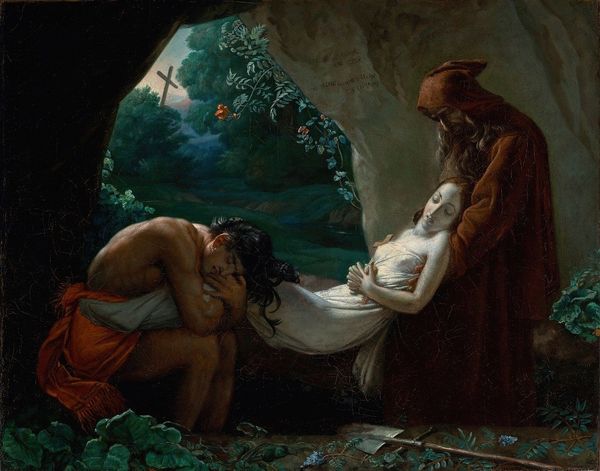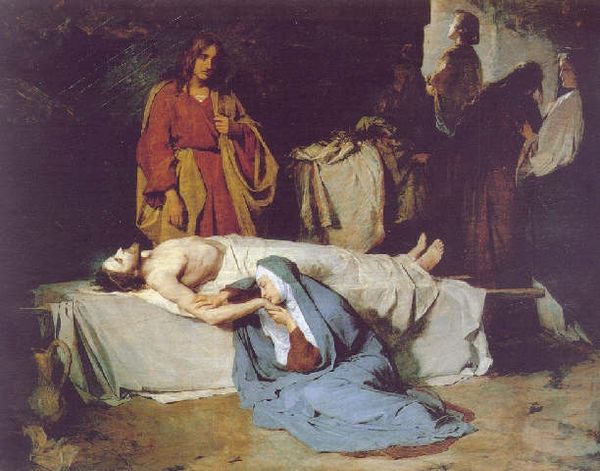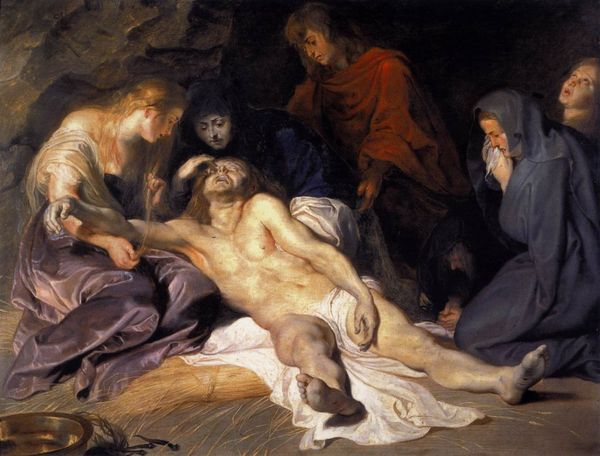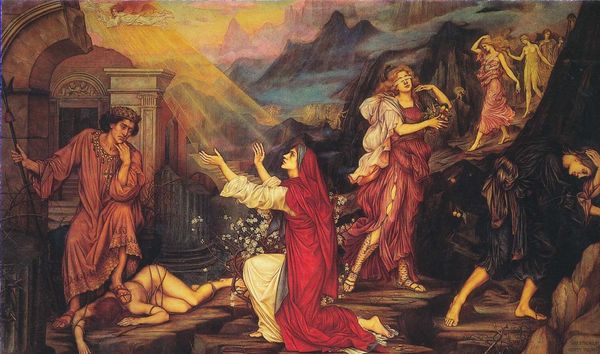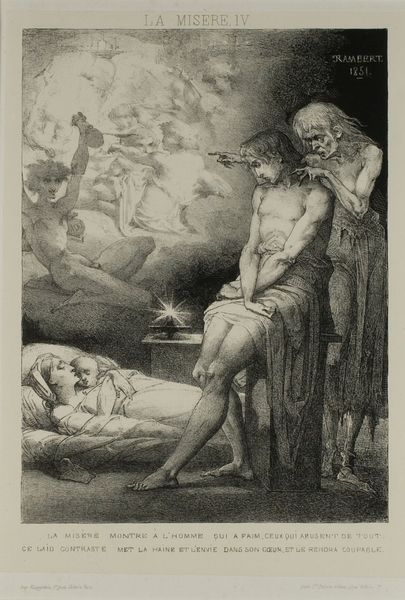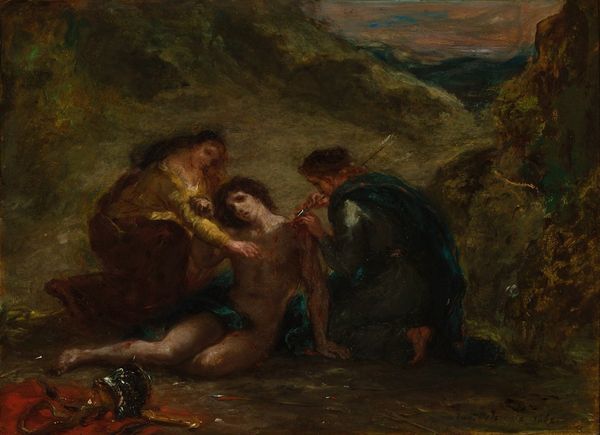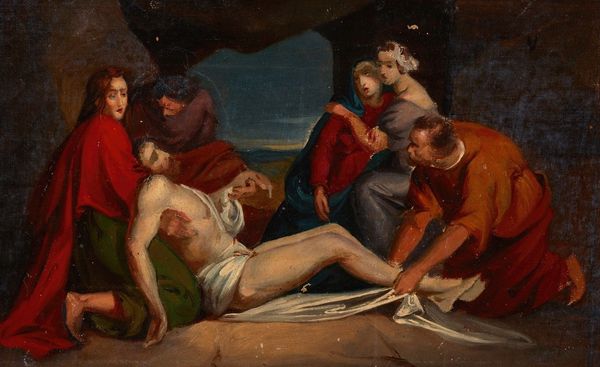
Dimensions: 57.6 x 47.5 cm
Copyright: Public domain
Curator: Ford Madox Brown’s 1869 painting, “The Finding of Don Juan by Haidee,” plunges us into a dramatic coastal scene rendered with the detail typical of the Pre-Raphaelite Brotherhood. Editor: The painting immediately strikes me as tragic. The palette is dominated by somber browns and grays, which amplifies the vulnerability of the central figure and creates an unsettling mood. Curator: The scene originates from Lord Byron’s epic poem "Don Juan," depicting the moment Haidee discovers the shipwrecked and unconscious Don Juan. Brown really aimed to capture that Romantic ideal of heightened emotion and exotic settings. Notice how the location almost becomes another character in the play, dictating our protagonists destiny. Editor: I find the representation of the two women particularly interesting. Haidee and her maid Zoë attend Don Juan, creating a fascinating triangulation of attention and power. Considering Victorian society's notions of feminine virtue and exotic "otherness", the artist positions them outside social boundaries. Is Brown celebrating their agency in the face of patriarchal dominance, or is he ultimately framing them through a colonial gaze? Curator: Well, that's where things get murky, doesn't it? Brown was certainly influenced by the prevailing ideologies of his time. His depiction romanticizes the East while still holding it at arm's length. I'd also point to the stylistic choices reinforcing its cultural reception, displayed at venues keen on historical subject matter to garner further credibility with the public. Editor: The boat is another powerful signifier. It's clearly capsized. It also implies a much larger political sea of trade, naval power, and colonial expansion through which Juan travels. Curator: Indeed. The materiality itself also adds another layer of socio-historical weight, this being an oil painting. It becomes an almost academic style when compared to more ‘revolutionary’ ones in the later part of the nineteenth century. Editor: Examining "The Finding of Don Juan by Haidee" has been a sobering exercise. Its layers of interpretation force us to confront the historical forces that both shaped its creation and continue to inform its reception. Curator: I concur. By understanding those contexts, we can hopefully promote dialogues around how history can inform contemporary understandings.
Comments
No comments
Be the first to comment and join the conversation on the ultimate creative platform.
